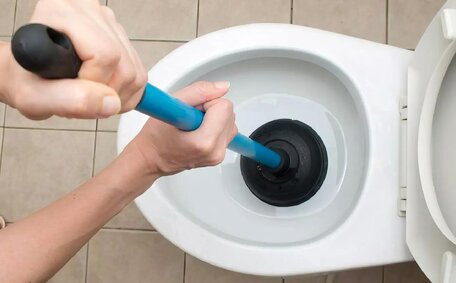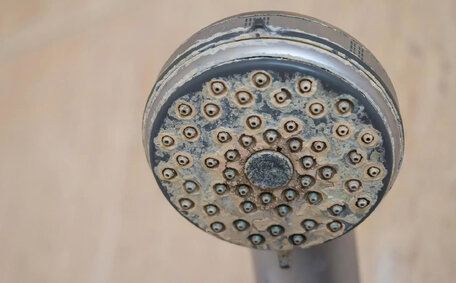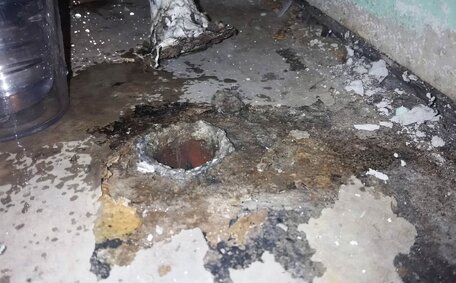What Is Pipe Relining and How Does It Work?
Pipe relining offers a non-destructive pipe repair solution that eliminates excavation, therefore preserving your property’s landscaping and structural integrity.
The technique involves inserting a flexible epoxy resin liner into the existing pipe, thereby relining the pipe with strong inner walls. Once the liner cures and hardens, the liners can seal any cracks or holes in the original pipe, within an existing one, restoring hot water functionality and preventing future issues.
The pipe relining process involves several steps to create a new pipe within the old one:
- Inspection - A CCTV drain camera inspection is essential to pinpoint the area and extent of damage within a pipe, laying the groundwork for the pipe lining process.
- Drain cleaning - A wide range of contaminants, from built-up debris to invasive roots inside the pipe, are meticulously cleared using high-pressure water jets.
- Liner Insertion - A durable liner is installed within the existing pipe structure. It begins by measuring the pipe, followed by inserting a felt liner impregnated with epoxy resin through an access point, which is then expanded to tightly fit against the old pipe walls.
- Curing - The liner is left to cure and harden, which usually takes a few hours. Once hardened, it forms a smooth, jointless pipe within the existing one.
Pipe relining effectively repairs cracked or damaged sewage pipes made from clay, concrete, and PVC, thereby restoring optimal water flow and preventing subsequent deterioration or blockages. Pipe relining solutions are faster, less invasive and more cost-effective than traditional pipe replacement methods.
When To Consider Pipe Relining As Preventative Maintenance
Pipe relining is a proactive maintenance strategy that promptly addresses pipe damage, thereby preventing further issues and protecting against the common causes of ageing and deteriorating plumbing systems.
Some scenarios where pipe relining is recommended as a proactive measure include:
- Prior to property renovations, relining sewer pipes can fortify your building against potential leaks, avoiding complications that may arise from neglected pipes.
- In commercial buildings over 10 years old - Proactively relining the piping in your commercial property can help you steer clear of emergencies, circumvent extensive repairs, and sidestep a blocked sewer, guaranteeing seamless operations for your business.
- Homes with tree-root-prone cast iron pipes can benefit from the protective epoxy barriers in sewer pipe relining to prevent future root intrusion and drain blockages.
- In homes with galvanised steel or cast iron drainage pipes over 30-50 years old - Pipe relining can significantly extend the service life of existing pipes, outperforming the lifespan of replacements for corroded pipes.
- To stop pinhole leaks in copper pipes - Catching small leaks early with pipe relining can prevent bigger pipe failures.
Proactive drain repairs, as opposed to waiting for complete drainage failures, reduce long-term costs and prevent costly property damage. This approach also minimises the risk of future repairs that could harm your floors and walls.
Identifying Early Signs of Pipe Deterioration
Being vigilant for early indications of wear or damage in sewer lines is crucial to prevent major plumbing failures. Some things to gauge whether what pipe relining may be necessary include:
- Slow or backing up drains - If your drains start draining slower than usual, this could be an early sign of a blocked drain and might indicate buildup, clogs, or damaged pipe allowing debris to accumulate.
- Gurgling sounds from your drain - Bubbling or gurgling noises from sink, shower or toilet drains can signify partial blockages or air pockets due to cracks in the pipe.
- Discoloured water - Rusty, brownish or dirty looking water points to corrosion and sediment buildup inside your pipes.
- Visible leaks or damp spots – sporadic drips or wall moisture can indicate small pipe breaches necessitating immediate attention.
- Musty smells coming from drains - Unpleasant odours are an indicator of blockages or bacterial growth inside damaged pipes, which could pose potential health risks.
- Creaking pipes - The sound of your old metal pipes expanding and contracting hints they may be on the brink of failure.
Addressing minor concerns with pipe relining can prevent serious failures requiring urgent in-wall repairs. It’s essential to act on subtle signs - arranging for a plumber’s inspection as soon as possible ensures relining can prolong your pipes’ service life.
Using Pipe Relining Before Problems Occur
Pipe relining is an effective preventative measure for averting substantial drainage or water flow problems. Proactive measures enable property owners to sidestep potential emergency repairs, associated high costs, damages, and business interruptions.
We advocate including regular inspections and considering drain pipe relining for ageing systems as a protective strategy. This approach identifies early signs of wear and tear before it escalates into in-wall pipe replacement, with no additional cost for early intervention. The epoxy barrier also defends against future root invasions which can compromise sewer lines and cause major blockages.
Relined pipes boast a lifespan that frequently surpasses 50 years. Pipe relining before problems occur is an affordable investment that saves money over time compared to repeated drain cleanings or last minute pipe repairs. It also reduces the hassles involved with having to dig trenches through floors and walls whenever issues emerge.
Consider adopting pipe relining proactively, identifying vulnerable sections of your plumbing due to age or nearby tree roots. Proactive relining with epoxy offers long-term protection, ensuring peace of mind and preventing future drainage emergencies.
Benefits of Pipe Relining As A Proactive Solution
Taking a proactive approach with pipe relining provides numerous advantages, even before any noticeable drainage issues arise:
- Avoids emergency repairs - By relining pipes in advance, you prevent the need for urgent blockage clearings or pipe repairs later on, saving you over 20% in costs.
- Prevents property damages - Catching minor pipe leaks early with professional pipe relining services prevents extensive water damages inside walls and ceilings over time.
- Saves landscapes - There’s no disruption caused to your garden, as relining negates the need for trench digging, thus preserving the outdoor green space.
- Minimises disruption - With no pipes to replace, relining avoids major jackhammering, broken walls or floors, keeping your property liveable.
- Longer system lifespan - Epoxy-relined pipes last over 50 years. This longevity saves unforeseen expenses and protects your yard from potential landscaping upheaval.
Compared to reactive pipe replacements, proactive epoxy relining provides long-term savings and protection against failures, managing the overall cost and disruptions for an affordable upfront investment.
Cost and Time Savings
Pipe relining offers considerable cost and time savings over traditional drain replacement methods, averaging about 60% less expensive than the total costs involved with excavating and replacing old pipes.
The lifespan of an epoxy relined pipe is over 50 years. At a fraction of the price of new pipe installation, Pipe relining is a solution that is less expensive than many alternatives, offering a very cost-effective long-term solution. It also minimises property damages and emergency repairs over decades.
In addition, pipe relining is a much faster process taking only 1-2 days on average versus 1-2 weeks for pipe replacement. Relining avoids major digging, jackhammering and restoration work so it greatly reduces disruption to your property.
By saving on costs, damages and time when compared to traditional methods, preventative relining is an affordable investment for your pipe that provides excellent ROI over the lifetime of your plumbing system.
Minimizing Future Issues
Pipe relining offers substantial prevention, greatly diminishing the chances of future plumbing problems. With a lifespan exceeding 50 years, relined pipes can help you evade leaks, bursts, and blockages for an extended period.
The epoxy barrier created by relining also acts as a defense against invasive tree roots that commonly penetrate ageing pipes, causing significant blockages. Stopping roots before they become an issue can cause savings by avoiding expensive emergency drainage cleanings down the road.
A proactive stance allows you to catch and resolve small issues before they lead to a broken pipe, preventing property damage and the need for pipe replacements. This saves thousands in emergency plumbing costs over the lifetime of the building.
Routine evaluations facilitate the early detection of wear, opening the way for preemptive lining. This approach preempts the need for conventional drain repairs and helps to reduce water wastage by addressing issues before they lead to complete drainage failure.
Taking a preventive approach with pipe relining gives building owners peace of mind knowing they’ve invested in the ongoing integrity of their plumbing system. It’s a small upfront cost for peace mind, avoiding huge headaches in the future.
Increased Lifespan of Pipes
Pipe relining significantly prolongs the life expectancy of plumbing systems. Relined with epoxy, pipes are restored to a condition akin to new and can last for many decades.
Data indicates that epoxy-relined pipes commonly have a lifespan that goes beyond 50 years. This duration far outstrips that of conventional materials such as copper or galvanised steel pipes, which typically require replacement every 15-25 years.
Pipe relining revitalises old, damaged pipes from within, ensuring they remain functional for the building’s lifespan, thereby reducing the need for frequent repairs. It transforms the old pipe into a new, jointless and corrosion-resistant one.
Compared to regular pipe replacements every couple of decades, investing in one-time pipe relining is extremely cost-effective. It also avoids recurring property damages and prevents emergency situations over the long run.
Pipe Relining vs. Full Replacement
Pipe relining is a less invasive alternative to traditional pipe replacement methods. Here’s how relining vs pipe replacement methods compare:
Installation Process
- Pipe Relining:
- No excavation required
- Insert flexible epoxy resin liner into existing pipe
- Liner expands and bonds to old pipe
- Full Replacement:
- Requires extensive digging and demolition to access pipes
- Old pipes removed and new pipes installed
- Trenches refilled and surfaces restored
Impacts
- Pipe Relining:
- Minimal property disturbance
- Much less environmental impact
- Full Replacement:
- Major property disruption
- Greater environmental impact from material waste and emissions
Duration
- The pipe relining process is typically completed within just 1-2 days
- Full pipe replacement takes 1-2 weeks
Outcome
- Both methods provide fully restored plumbing system integrity and longevity
- Pipe relining achieves similar results with less invasiveness and cost
Trenchless pipe relining is the most expedient, non-invasive, and eco-friendly option available, offering comparable benefits at 60% lower cost over the lifetime of the plumbing system.
Cost Comparison
Pipe relining provides major cost savings over full pipe replacement. On average, epoxy pipe relining costs approximately 60% less than completely excavating and installing new pipe systems.
The cost of pipe relining for a standard 30 meter project varies between $2,500 to $4,500, depending on pipe size and accessibility. Conversely, materials alone for full pipe replacement for a similar stretch could cost between $6,000 to $10,000. Including demolition, disposal fees, labour, and restoration, total replacement expenses may surpass $15,000.
The cost-effective pipe relining with a 50+ year lifespan avoids recurring costs over decades compared to pipes needing replacement every 20-25 years. By providing similar results without the need to dig, at a fraction of the price, preventative epoxy relining yields substantial ROI and is a smart, cost-effective investment for long-term plumbing integrity.
Process and Timeline
A standard pipe relining project is completed within 1-2 days, comprising the following key steps:
- Inspection - A camera inspection of the pipes is performed first to assess damage and readiness for inserting new pipe lining materials. This takes 2-4 hours.
- Cleaning & Preparation - Damaged sections are meticulously cleaned using high-pressure water jets. The pipe is then measured and the custom-fitted epoxy liner is prepared. This takes 4-6 hours.
- Resin Insertion - The liner soaked in epoxy resin is carried out through an access point and expanded using compressed air for a tight fit. This stage takes 2-3 hours.
- Curing & Final Testing - The pipe repair liner cures and hardens into place over 6-12 hours. Final CCTV drain inspections and water flow tests are done to confirm normal drainage functionality. This takes 1-2 hours.
The short 1-2 day timeline integrates seamlessly with your daily routine, making pipe relining an extremely convenient repair method compared to 1-2 weeks for pipe replacement projects. This enables minimal interruption to your home or business.
When Pipe Relining May Not Be Suitable
While pipe relining is suitable in many situations, there are a few instances where it may not be the best option:
- Severely damaged or collapsed pipes - If a drain pipe has significant deformation, gaps or obstructions, the liner may not be able to form a tight seal on the damaged walls.
- Sewer pipes with severe corrosion holes - Large openings or completely corroded sections can prevent the liner from bonding or achieving structural stability.
- Pipes previously relined - Installing another liner over an existing one reduces diameter and flow capacity over time.
- Pipes sized under 2 inches or over 12 inches - Most relining systems have size limitations for what they can handle.
- Inaccessible pipe sections - The liner needs to be continuously inserted from an access point to the end of the pipe run.
In some cases where relining is not suitable, partial or complete pipe replacement may be required. An expert plumber can assess viability and recommend the most suitable repair options, utilising techniques and tools we use for your situation.
Choosing a Qualified Professional Pipe Relining Service
When selecting a professional pipe relining service, it’s important to choose an experienced company that can properly assess if relining is suitable for your plumbing system.
Here are some tips for choosing a qualified pipe relining Sydney provider:
- Would you like a company that has been in business for 5+ years and specialises in CIPP pipe relining? It can be used effectively.
- Request references from past clients with projects similar to yours.
- Choose a pipe relining specialist that provides detailed pipe inspections and recommendations on whether lining or partial/full replacement is needed.
- Opt for a provider that offers guarantees and warranties on pipe relining work.
- Go with an insured and licenced plumbing contractor for accountability.
At Emu Plains Plumbing, our pipe relining experts have 10+ years experience determining the best trenchless solutions for residential and commercial properties. We use cutting-edge imaging and the highest-grade materials to provide long-lasting results.Contact us today at 1300 349 338 or [email protected] for a complimentary pipe assessment.






